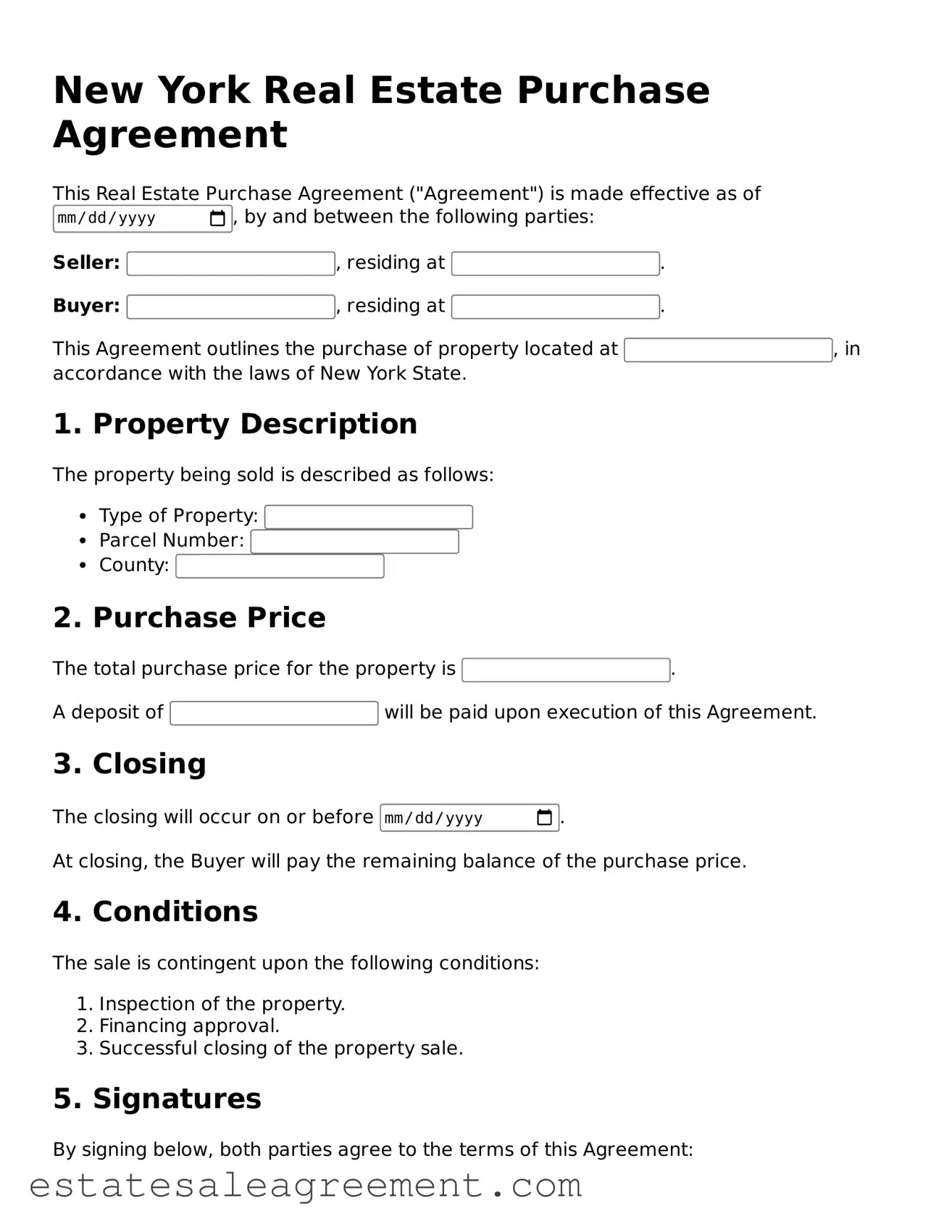What is a New York Real Estate Purchase Agreement?
The New York Real Estate Purchase Agreement is a legally binding document that outlines the terms and conditions under which a buyer agrees to purchase a property from a seller. This agreement includes details such as the purchase price, financing terms, and contingencies, ensuring that both parties understand their rights and obligations during the transaction.
What are the key components of the agreement?
Key components of the New York Real Estate Purchase Agreement include the identification of the parties involved, a description of the property, the purchase price, earnest money deposit, closing date, and any contingencies such as inspections or financing. Additional clauses may address repairs, title issues, and other specific conditions relevant to the transaction.
Is the agreement required for all real estate transactions in New York?
While it is not legally required to use a Real Estate Purchase Agreement for every transaction, it is highly recommended. This document provides legal protection for both the buyer and seller, clearly outlining the terms of the sale and minimizing potential disputes. Without a written agreement, parties may face challenges in enforcing verbal agreements.
Can the agreement be modified after it is signed?
Yes, the New York Real Estate Purchase Agreement can be modified after it is signed, but both parties must agree to the changes. Any modifications should be documented in writing and signed by both the buyer and seller to ensure enforceability. It is essential to keep a record of all amendments to avoid confusion later in the transaction.
What happens if one party breaches the agreement?
If one party breaches the agreement, the other party may have several options. They can seek specific performance, which compels the breaching party to fulfill their obligations, or they can pursue damages for any losses incurred due to the breach. Legal remedies may vary depending on the specific terms of the agreement and the nature of the breach.
Are there any contingencies typically included in the agreement?
Yes, contingencies are common in a New York Real Estate Purchase Agreement. These may include financing contingencies, inspection contingencies, and appraisal contingencies. Each of these allows the buyer to back out of the agreement without penalty if certain conditions are not met, providing an additional layer of protection during the transaction.
How can I ensure that my agreement is legally binding?
To ensure that the New York Real Estate Purchase Agreement is legally binding, it must be in writing and signed by both parties. Additionally, all essential terms should be clearly defined within the document. It is advisable to consult with a real estate attorney or a qualified professional to review the agreement before signing, ensuring compliance with state laws and regulations.
